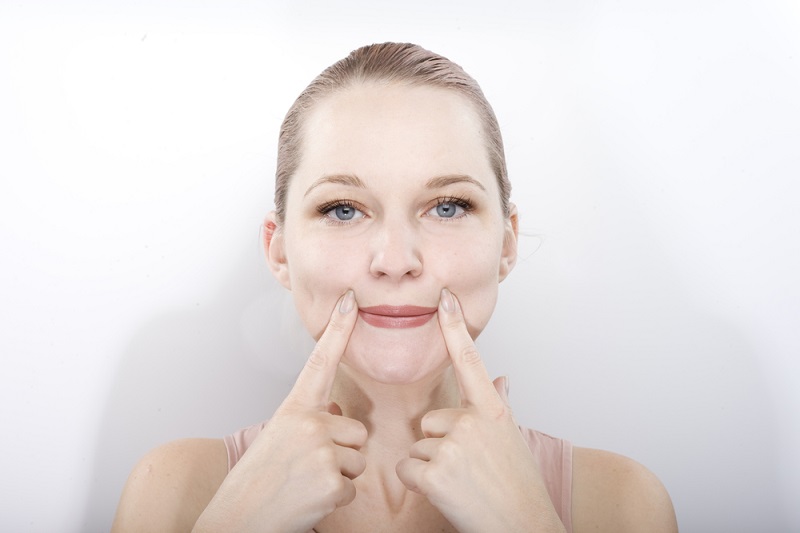Could 'Facial Yoga' Really Make You Look Younger?

Regularly practicing facial "yoga," or exercises for your facial muscles, may actually make you look younger, early research suggests.
In a small, new study, researchers taught 27 middle-age women (ages 40 to 65) how to perform 32 facial exercises, which included simple actions such as smiling and sucking in the cheeks. After this training, the participants performed these exercises at home for 30 minutes a day, every day for eight weeks. On the ninth week of the study, the participants reduced the frequency of their 30-minute exercise routine to every other day (three to four days a week), and continued this regimen for 20 weeks.
The participants also had their photos taken at the beginning and end of the study, and several doctors rated these photos using a standard method for assessing the appearance of aging in the face and neck. The raters, who didn't know which photos were taken before and which photos were taken after the exercises, also estimated the age of the person in the photo.
After 20 weeks, the participants had better ratings for the fullness of their cheeks, on average, compared with their ratings at the start of the study. In other words, their cheeks looked fuller after their 20-week facial exercise regimen. [7 Plastic Surgery Myths Revealed].
This change in cheek fullness also made the participants look younger: Raters estimated that the participants looked nearly three years younger after the exercises, compared with before. (The average estimated age was 48.1 years after the exercises, versus 50.8 years before.)
The findings suggest that "non-invasive, non-toxic, at-home exercises that anyone can perform can possibly slow or correct the appearance of volume loss in the face," which is associated with aging, lead study author Dr. Murad Alam, vice chair and professor of dermatology at Northwestern University Feinberg School of Medicine, told Live Science in an email. "Facial attractiveness and youth are associated with a smooth, full facial contour, so even a modest improvement of facial contour is a win for patients," Alam said.
However, the findings are preliminary and should be confirmed with a larger study, the researchers said. And many questions remain about exactly which exercises are beneficial and who might benefit from them. The study involved middle-age, predominantly white women, who stayed in the study for 20 weeks, so it's not known whether the effects seen in the study would apply to men, or to people of other ages or ethnicities. It's also not clear how long people need to perform the exercises in order to see benefits, Alam said.
Sign up for the Live Science daily newsletter now
Get the world’s most fascinating discoveries delivered straight to your inbox.
There's also a risk that certain facial exercises might actually make you look older. That's because some repetitive muscle motions in the face can make wrinkles worse, Alam said. For example, people who frown a lot can develop a pair of deep, vertical creases between their eyebrows (called "11s"), and those who smile a lot can develop "crow's feet" around their eyes sooner than those who don't smile or frown as frequently, Alam said.
But it's not known how often people need to make these expressions to make their wrinkles worse, Alam said. It's possible that the facial exercises in the study, which were performed for only about a minute each, aren't held for long enough to lead to worse wrinkles, he said.
The exercises that appeared the most helpful in the study were those that work the cheek muscles, such as those that involved puckering and squeezing the cheeks, Alam said. It's thought that the exercises may cause "hypertrophy" of the cheek muscles, meaning the muscles get bigger and thus may result in the cheeks looking fuller and firmer.
"Maybe we can 'have our cake and eat it, too,' meaning we can build up our cheek muscles without doing many exercises that worsen the [wrinkles in the] forehead and eyelids," Alam said.
The study was published online today (Jan. 3) in the journal JAMA Dermatology.
Original article on Live Science.

Rachael is a Live Science contributor, and was a former channel editor and senior writer for Live Science between 2010 and 2022. She has a master's degree in journalism from New York University's Science, Health and Environmental Reporting Program. She also holds a B.S. in molecular biology and an M.S. in biology from the University of California, San Diego. Her work has appeared in Scienceline, The Washington Post and Scientific American.









